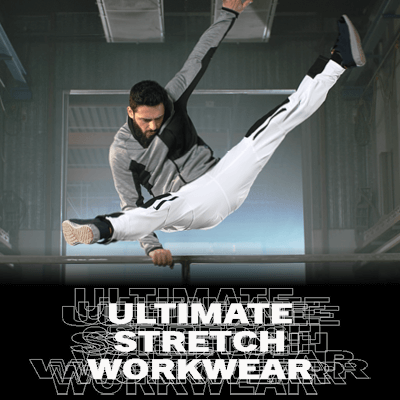Reduce the risk of injuries
Tue, 16 Nov 2010
A high percentage of work related accidents that occur throughout the countries workplaces are caused by slips or trips. Slips at a height can lead to even more serious injuries.
Therefore it is important to take all precautions you can to reduce the risks of slipping.
There are many things you can do, for example lacing up your boots correctly, wear clothing and accessories in a way so they don’t catch on anything, ensure the workplace is correctly lit and avoid carrying heavy things on uneven surfaces. The floor covering has a lot to do with it but you can rarely change that when standing amidst your daily work. Instead, you can choose footwear that are suitable to the floor covering and that can help you stand firmly on the floor.
Standard for Slip Resistance
Safety footwear is also tested for slip resistance – the standard is EN ISO 13287. Tests are conducted in two different categories, oil on steel surfaces and a soap solution on a ceramic surface. Both are performed on a flat surface (full sole in contact) and a 7 degree slope (only the heel in contact). On these surfaces the sole and the construction prove their worth by meeting the minimum demands.
Highest slip resistance obtained
Slip resistance was a decisive factor when MASCOT began to develop the new safety footwear which was launched in 2010. Therefore as a minimum the special sole construction had to meet the EN ISO 13287 norm. The two sole types that MASCOT launched met the demands of both the soap on ceramic (SRA) and oil on steel (SRB) thereby obtaining an automatic SRC recognition – the best standard for slip resistance.
Comfort and support is also essential for safety
Slipping is also about other things which cannot be certified. A good and comfortable walk in a boot that supports the ankle and absorbs pressure can also help gain a better balance and grip on different flooring surfaces. Flexibility (that the sole can easily bend) is also crucial to ensure the wearer gets best contact to the ground at all times. The design of the sole pattern is also significant. For example, it is important that water on the surface can be let out of the tread.
Close collaboration with wearers
The 13 new models launched in 2010 by MASCOT were divided into two primary audiences. Both Tradesmen and Industry workers have high expectations of their footwear. However tradesmen, although looking for a hard wearing shoe also look for stylish footwear in different colours for example. MASCOT has worked closely with wearers of safety footwear in developing both ranges.
Standing firm on steep surfaces
One of the main requirements of these new ranges of footwear, which came from a large customer, was that the safety footwear should also stand firmly when working on steep surfaces such as ditches and slopes (e.g road workers and railway maintenance). MASCOT solved this by making the edge of the footwear squarer to what is commonly seen in industry footwear where the inner and outer edges of the footwear are often rounded. The new sole construction was of course fully “Tested to Work” prior to production and the squarer edge was found to meet the demands.
The worker working in a steep ditch could “cut” into the ditch edge when going up or down sideways thereby helping to keep the workers balance.
MASCOT has had safety footwear in the range since 2007. In the latest launch of styles, slip resistance was of highest importance. MASCOT has worked closely with customers who have also tested the shoes and boots thoroughly prior to launch.
Both of the sole types which MASCOT has launched in 2010 have met the demands for soap on ceramic (SRA) and oil on steel (SRB) giving the footwear an automatic SRC approval which is the best category within the safety norm for footwear.





















